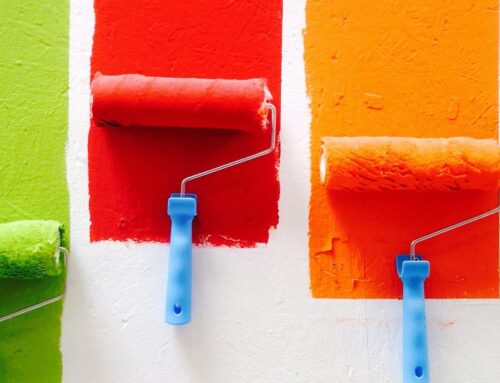
Painting Safety Precautions to Keep You Protected
When it comes to any painting project, safety should always be a top priority. Painting may seem like a simple task, but it involves various risks and hazards that can cause harm if not properly addressed. From handling paint and chemicals to working at heights, there are several precautions that need to be taken to ensure the safety of everyone involved.
Painting safety is important for both professionals and DIY enthusiasts. Whether you are painting a small room in your home or working on a large-scale commercial project, understanding and implementing safety measures is crucial. By prioritizing safety, you can prevent accidents, injuries, and potential damage to property.
Key Takeaways
- Painting safety is crucial to prevent accidents and health hazards.
- Champion Painting is a company that prioritizes safety in their work.
- Precautionary measures before painting include checking for ventilation and removing flammable materials.
- Proper clothing and protective gear, such as gloves and goggles, should be worn during painting.
- Handling paint and chemicals safely involves storing them properly and avoiding skin contact.
Champion Painting: A Company Committed to Painting Safety Precautions to Keep You Protected
Champion Painting is a company that understands the importance of safety in painting projects. They have made it their mission to prioritize safety in all their painting endeavors. With years of experience in the industry, they have developed comprehensive safety policies and procedures that are followed by their team members.
Champion Painting ensures that all their employees are trained in proper safety protocols before they start working on any project. They provide ongoing training and education to keep their team updated on the latest safety practices and regulations. By doing so, they create a safe working environment for their employees and ensure that their clients’ properties are protected.
Precautionary Measures Before Painting
Before starting any painting project, it is essential to take precautionary measures to ensure a safe work environment. This includes preparing the work area and removing any potential hazards. Clearing the area of furniture, rugs, and other objects will prevent accidents and make it easier to move around while painting.
Additionally, it is important to inspect the work area for any electrical hazards or damaged surfaces. Fixing any electrical issues and repairing damaged walls or ceilings will reduce the risk of accidents during the painting process. Taking these precautionary measures will create a safer environment for both the painters and the occupants of the space.
Proper Clothing and Protective Gear
| Proper Clothing and Protective Gear | Metric |
|---|---|
| Number of employees trained on proper use of protective gear | 75 |
| Number of workplace injuries related to lack of proper clothing and gear | 2 |
| Number of safety inspections conducted on protective gear | 10 |
| Percentage of employees who wear proper clothing and gear at all times | 90% |
Wearing proper clothing and protective gear is crucial when it comes to painting safety. Paint can be messy and may contain harmful chemicals, so it is important to protect your skin and eyes. Wearing long-sleeved shirts, pants, and closed-toe shoes will prevent paint from coming into direct contact with your skin. Additionally, wearing safety goggles will protect your eyes from any splashes or fumes.
In some cases, additional protective gear may be necessary depending on the type of painting project. For example, when working with spray paint or in confined spaces, a respirator may be required to protect against harmful fumes. It is important to assess the specific needs of each painting project and provide the appropriate protective gear to ensure the safety of everyone involved.
Handling Paint and Chemicals
Properly handling paint and chemicals is essential for painting safety. It is important to read and follow the manufacturer’s instructions for each product to ensure safe usage. This includes storing paint and chemicals in a well-ventilated area away from heat sources or open flames.
When working with paint, it is important to avoid inhaling fumes by working in a well-ventilated area or using a respirator if necessary. Additionally, spills should be cleaned up immediately to prevent slips and falls. By following proper handling procedures, you can minimize the risks associated with paint and chemical usage.
Avoiding Fire Hazards

Painting projects can pose potential fire hazards if not properly managed. Many paints and solvents are flammable, so it is important to keep them away from any potential ignition sources. This includes keeping flammable materials such as rags or paper towels away from the work area.
It is also important to be cautious when using heat sources such as heat guns or blowtorches during the painting process. These tools can ignite flammable materials if not used properly. By being aware of potential fire hazards and taking the necessary precautions, you can prevent accidents and ensure a safe painting environment.
Electrical Safety Precautions
When painting, it is important to take electrical safety precautions to prevent accidents and injuries. Before starting any painting project, it is crucial to turn off all electrical appliances in the work area. This includes lights, fans, and any other electrical devices that may be in close proximity to the painting area.
Additionally, it is important to be cautious when working near electrical outlets or switches. Avoid touching them with wet hands or while standing on wet surfaces to prevent electric shocks. By following these electrical safety precautions, you can minimize the risk of electrical accidents during the painting process.
Ladder Safety Tips
Working at heights is a common aspect of many painting projects, and ladder safety is of utmost importance. When using a ladder, it is crucial to choose a stable and secure one that can support your weight. Inspect the ladder before each use to ensure that it is in good condition and free from any defects.
When using a ladder, always maintain three points of contact by having both feet and one hand or both hands and one foot on the ladder at all times. Avoid overreaching or leaning too far to one side, as this can cause the ladder to become unstable. By following ladder safety tips, you can prevent falls and injuries while working at heights.
Respiratory Protection

Respiratory protection is necessary when working with certain types of paint or in environments with poor ventilation. Paint fumes can be harmful if inhaled for extended periods of time, so it is important to take the necessary precautions to protect your respiratory system.
There are different types of respiratory protection available depending on the level of exposure and the type of paint being used. This can range from disposable masks to more advanced respirators with filters. It is important to assess the specific needs of each painting project and provide the appropriate respiratory protection to ensure the safety of everyone involved.
Post-Painting Safety Measures
After completing a painting project, it is important to take post-painting safety measures to ensure a safe environment. This includes properly disposing of paint and chemicals. Paint should never be poured down the drain or thrown in the trash, as it can contaminate water sources and harm the environment.

Instead, paint should be disposed of at designated collection sites or through a hazardous waste disposal program. Empty paint cans can be recycled if they are completely dry and free from any residue. By properly disposing of paint and chemicals, you can prevent environmental damage and ensure a safe post-painting environment.
In conclusion, painting safety is of utmost importance in any painting project. Whether you are a professional painter or a DIY enthusiast, prioritizing safety is crucial to prevent accidents, injuries, and potential damage to property. Champion Painting is a company that understands the importance of safety and has implemented comprehensive safety policies and procedures.
Before starting any painting project, it is important to take precautionary measures such as preparing the work area and removing potential hazards. Wearing proper clothing and protective gear is essential to protect against paint and chemical exposure. Properly handling paint and chemicals, avoiding fire hazards, and taking electrical safety precautions are also crucial for painting safety.
When working at heights, ladder safety tips should be followed to prevent falls and injuries. Respiratory protection should be used when necessary to protect against harmful fumes. Finally, post-painting safety measures such as proper disposal of paint and chemicals should be taken to ensure a safe environment.
By prioritizing safety in painting projects, you can create a safe working environment for everyone involved and ensure the success of your project.
If you’re interested in painting safety precautions, you may also find our article on staining your decking helpful. It provides valuable tips and guidelines to ensure a safe and successful deck staining project. From choosing the right materials to proper preparation and application techniques, this article covers everything you need to know to protect yourself and your deck. Check it out here.
Take a look at the cities we have to offer
- Nipomo House painters,
- Santa Maria House painters,
- San Luis Obispo House painters,
- Grover Beach House painters,
- Shell Beach House painters,
- Oceano House painters
FAQs

What are painting safety precautions?
Painting safety precautions are measures taken to ensure the safety of individuals who are involved in painting activities. These measures are put in place to prevent accidents and injuries that may occur during the painting process.
Why are painting safety precautions important?
Painting safety precautions are important because they help to prevent accidents and injuries that may occur during the painting process. These precautions also help to protect individuals from exposure to harmful chemicals and fumes that may be present in paint.
What are some common painting safety precautions?
Some common painting safety precautions include wearing protective clothing, using proper ventilation, using the correct type of paint for the job, and following manufacturer instructions for the paint and equipment being used.
What type of protective clothing should be worn during painting?
Protective clothing that should be worn during painting includes gloves, safety glasses, and a respirator mask. Clothing should also cover the entire body to prevent skin exposure to paint.
What type of ventilation should be used during painting?
Proper ventilation during painting includes opening windows and doors to allow fresh air to circulate, using fans to increase air flow, and using a respirator mask to filter out harmful fumes.
What should be done if paint is accidentally ingested or inhaled?
If paint is accidentally ingested or inhaled, seek medical attention immediately. Do not induce vomiting unless instructed to do so by a medical professional.
Page design by House Painting Near Me

Champion Painting
Recent Post's
Champion Painting is a reputable painting company based in Arroyo Grande, California. With years of experience in the industry, they have established themselves as a
A well-done paint job can have a significant impact on the overall look and feel of a space. Whether it's a residential home or a
The interior of your home plays a crucial role in creating a welcoming and comfortable atmosphere. One of the most effective ways to enhance the
Vestibulum ante ipsum primis in faucibus orci luctus et ultrices posuere.
Get a Free Estimate
















